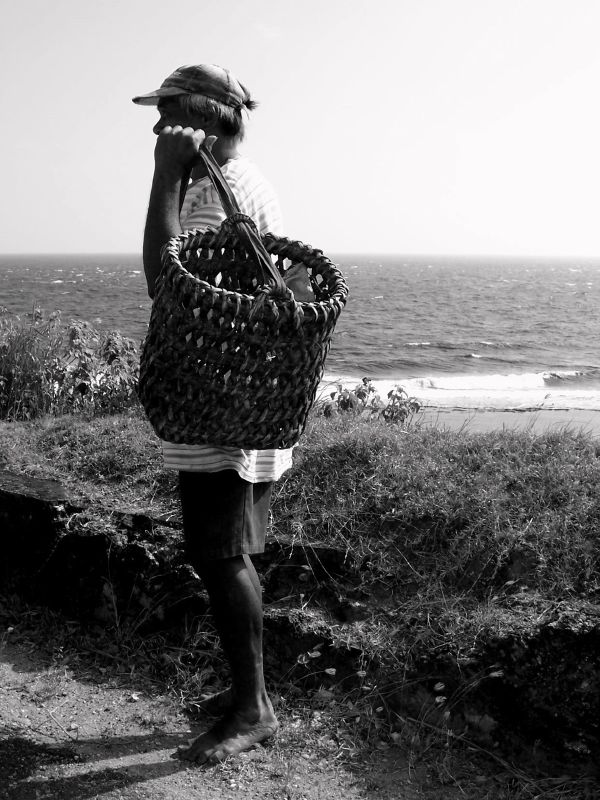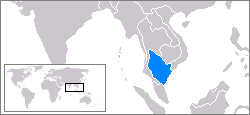|
Enneapterygius Rhabdotus
''Enneapterygius rhabdotus'', the umpire triplefin or South Pacific striped triplefin, is a species of triplefin blenny in the genus ''Enneapterygius''. It was described by Ronald Fricke in 1994. This species occurs in the western central Pacific Ocean the Izu Peninsula in Japan, Taiwan, Batanes and Palawan in the northern Philippines, the Gulf of Thailand, Palau, and most of Melanesia east to the Pitcairn Islands. References rhabdotus ''Rhabdotus'' is a genus in the ground beetle family Carabidae Ground beetles are a large, cosmopolitan family of beetles, the Carabidae, with more than 40,000 species worldwide, around 2,000 of which are found in North America and 2,700 in E ... Fish described in 1994 {{Blenniiformes-stub ... [...More Info...] [...Related Items...] OR: [Wikipedia] [Google] [Baidu] |
Ronald Fricke
Ronald Fricke is a German ichthyologist and researcher of biodiversity at the State Museum of Natural History Stuttgart. As of 2022, Fricke authored 8 families, 10 genera and 186 species within the families of Callionymidae Dragonets are small, percomorph, marine fish of the diverse family Callionymidae (from the Greek ''kallis'', "beautiful" and ', "name") found mainly in the tropical waters of the western Indo-Pacific. They are benthic organisms, spending most o ..., Gobiesocidae, Ophichthidae, Tripterygiidae and other families. He is a co-editor of Eschmeyer's Catalog of Fishes; among his current tasks is the building of a digital ichthyological literature archive. Publications See Wikispecies below. Taxon described by him *See :Taxa named by Ronald Fricke References External links * Living people Year of birth missing (living people) Taxon authorities German ichthyologists 21st-century German zoologists Scientists from Stuttgart {{Germany-scien ... [...More Info...] [...Related Items...] OR: [Wikipedia] [Google] [Baidu] |
Triplefin Blenny
Threefin or triplefin blennies are blenniiforms, small percomorph marine fish of the family Tripterygiidae. Found in tropical and temperate waters of the Atlantic, Pacific and Indian Oceans, the family contains about 150 species in 30 genera. The family name derives from the Greek ''tripteros'' meaning "with three wings". With an elongated, typical blenny form, threefin blennies differ from their relatives by having a dorsal fin separated into three parts (hence the name); the first two are spinous. The small, slender pelvic fins are located underneath the throat and possess a single spine; the large anal fin may have one or two spines. The pectoral fins are greatly enlarged, and the tail fin is rounded. The New Zealand topknot, ''Notoclinus fenestratus'', is the largest species at 20 cm in total length; most other species do not exceed 6 cm. Many threefin blennies are brightly coloured, often for reasons of camouflage; these species are popular in the aquarium hobby. ... [...More Info...] [...Related Items...] OR: [Wikipedia] [Google] [Baidu] |
Enneapterygius
''Enneapterygius'' is a genus of fish in the family Tripterygiidae found in the Indian and Pacific Ocean. Species There are currently 63 recognized species in this genus: * ''Enneapterygius abeli'' ( Klausewitz, 1960) (Yellow triplefin) * ''Enneapterygius altipinnis'' E. Clark, 1980 * ''Enneapterygius atriceps'' ( O. P. Jenkins, 1903) (Hawaiian black-head triplefin) * ''Enneapterygius atrogulare'' ( Günther, 1873) (Black-throat triplefin) * ''Enneapterygius bahasa'' R. Fricke, 1997 * ''Enneapterygius cheni'' S. C. Wang, K. T. Shao & S. C. Shen, 1996 * ''Enneapterygius clarkae'' Holleman, 1982 (Barred triplefin) * ''Enneapterygius clea'' R. Fricke, 1997 (Clea's triplefin) * ''Enneapterygius destai'' E. Clark, 1980 * ''Enneapterygius elaine'' Holleman, 2005 * ''Enneapterygius elegans'' ( W. K. H. Peters, 1876) (Hourglass triplefin) * ''Enneapterygius etheostomus'' ( D. S. Jordan & Snyder, 1902) * '' Enneapterygius fasciatus'' ( M. C. W. Weber, 1909) (Banded tr ... [...More Info...] [...Related Items...] OR: [Wikipedia] [Google] [Baidu] |
Species Description
A species description is a formal description of a newly discovered species, usually in the form of a scientific paper. Its purpose is to give a clear description of a new species of organism and explain how it differs from species that have been described previously or are related. In order for species to be validly described, they need to follow guidelines established over time. Zoological naming requires adherence to the ICZN code, plants, the ICN, viruses ICTV, and so on. The species description often contains photographs or other illustrations of type material along with a note on where they are deposited. The publication in which the species is described gives the new species a formal scientific name. Some 1.9 million species have been identified and described, out of some 8.7 million that may actually exist. Millions more have become extinct throughout the existence of life on Earth. Naming process A name of a new species becomes valid (available in zo ... [...More Info...] [...Related Items...] OR: [Wikipedia] [Google] [Baidu] |
Izu Peninsula
The is a large mountainous peninsula with a deeply indented coastline to the west of Tokyo on the Pacific coast of the island of Honshu, Japan. Formerly known as Izu Province, Izu peninsula is now a part of Shizuoka Prefecture. The peninsula has an area of and its estimated population in 2005 was 473,942 people. The peninsula’s populated areas are located primarily on the north and east. Geology Tectonically, the Izu peninsula results from the Philippine Sea Plate colliding with the Okhotsk Plate at the Nankai Trough. The Philippine Sea Plate, the Amurian Plate, and the Okhotsk Plate meet at Mount Fuji, a triple junction. The peninsula itself lies on the Philippine Sea Plate. The southern portion of the peninsula is composed largely of breccia, and the central and northern portions consist of numerous highly eroded volcanoes. The Amagi Mountain Range dominates the center of the peninsula with Mount Amagi () and Mount Atami () in the east and Mount Daruma () in ... [...More Info...] [...Related Items...] OR: [Wikipedia] [Google] [Baidu] |
Batanes
Batanes, officially the Province of Batanes ( ivv, Provinsiya nu Batanes; Ilocano: ''Probinsia ti Batanes''; fil, Lalawigan ng Batanes, ), is an archipelagic province in the Philippines, administratively part of the Cagayan Valley region. It is the northernmost province in the country, and also the smallest, both in population and land area. The capital is Basco, located on the island of Batan. The island group is located approximately north of the Luzon mainland and about south of Taiwan ( Pingtung County), separated from the Babuyan Islands of Cagayan Province by the Balintang Channel, and from Taiwan by the Bashi Channel. The entire province is listed in the UNESCO tentative list for inscription in the World Heritage List. The government has been finalizing the site's inscription, establishing museums and conservation programs since 2001. Seven intangible heritage elements of the Ivatan have been set by the Philippine government in its initial inventory in 2012. The ... [...More Info...] [...Related Items...] OR: [Wikipedia] [Google] [Baidu] |
Palawan
Palawan (), officially the Province of Palawan ( cyo, Probinsya i'ang Palawan; tl, Lalawigan ng Palawan), is an archipelagic province of the Philippines that is located in the region of Mimaropa. It is the largest province in the country in terms of total area of . The capital city is Puerto Princesa. Palawan is known as the Philippines' ''Last Frontier'' and as the Philippines' ''Best Island''. The islands of Palawan stretch between Mindoro island in the northeast and Borneo in the southwest. It lies between the South China Sea and the Sulu Sea. The province is named after its largest island, Palawan Island (), measuring long, and wide."Palawan – the Philippines' Last Frontier" ''WowPhilippines''. Accessed August 27, 2008. [...More Info...] [...Related Items...] OR: [Wikipedia] [Google] [Baidu] |
Gulf Of Thailand
The Gulf of Thailand, also known as the Gulf of Siam, is a shallow inlet in the southwestern South China Sea, bounded between the southwestern shores of the Indochinese Peninsula and the northern half of the Malay Peninsula. It is around in length and up to in width, and has a surface area of . The gulf is surrounded on the north, west and southwest by the coastlines of Thailand (hence the name), on the northeast by Cambodia and the Mekong Delta region of Vietnam, and opens to the South China Sea in the southeast. Names The modern Thai name of the gulf is ''Ao Thai'' ( th, อ่าวไทย, , 'Thai Gulf') and "Gulf of Thailand" has been adopted as the official name of the body by the International Hydrographic Organization. Its name in Malay is he "Gulf of Siam", ''Teluk Siam'', and in km, ឈូងសមុទ្រសៀម'', Chhoung Samut Siem''. In Thai, the gulf is historically known as ''Ao Sayam'' ( th, อ่าวสยาม). In Vietnamese it is know ... [...More Info...] [...Related Items...] OR: [Wikipedia] [Google] [Baidu] |
Palau
Palau,, officially the Republic of Palau and historically ''Belau'', ''Palaos'' or ''Pelew'', is an island country and microstate in the western Pacific. The nation has approximately 340 islands and connects the western chain of the Caroline Islands with parts of the Federated States of Micronesia. It has a total area of . The most populous island is Koror, home to the country's most populous city of the same name. The capital Ngerulmud is located on the nearby island of Babeldaob, in Melekeok State. Palau shares maritime boundaries with international waters to the north, the Federated States of Micronesia to the east, Indonesia to the south, and the Philippines to the northwest. The country was originally settled approximately 3,000 years ago by migrants from Maritime Southeast Asia. Palau was first drawn on a European map by the Czech missionary Paul Klein based on a description given by a group of Palauans shipwrecked on the Philippine coast on Samar. Pal ... [...More Info...] [...Related Items...] OR: [Wikipedia] [Google] [Baidu] |
Melanesia
Melanesia (, ) is a subregion of Oceania in the southwestern Pacific Ocean. It extends from Indonesia's New Guinea in the west to Fiji in the east, and includes the Arafura Sea. The region includes the four independent countries of Fiji, Vanuatu, the Solomon Islands, and Papua New Guinea. It also includes the French oversea collectivity of New Caledonia, Indigenous Australians of the Torres Strait Islands and parts of Indonesia, most notably the provinces of Central Papua, Highland Papua, Papua, South Papua, Southwest Papua, and West Papua. Almost all of the region is in the Southern Hemisphere; only a few small islands that are not politically considered part of Oceania—specifically the northwestern islands of Western New Guinea—lie in the Northern Hemisphere. The name ''Melanesia'' (in French, ''Mélanésie'') was first used in 1832 by French navigator Jules Dumont d'Urville: he coined the terms ''Melanesia'' and '' Micronesia'' along the preexisting ''P ... [...More Info...] [...Related Items...] OR: [Wikipedia] [Google] [Baidu] |
Pitcairn Islands
The Pitcairn Islands (; Pitkern: '), officially the Pitcairn, Henderson, Ducie and Oeno Islands, is a group of four volcanic islands in the southern Pacific Ocean that form the sole British Overseas Territory in the Pacific Ocean. The four islands— Pitcairn, Henderson, Ducie and Oeno—are scattered across several hundred miles of ocean and have a combined land area of about . Henderson Island accounts for 86% of the land area, but only Pitcairn Island is inhabited. The islands nearest to the Pitcairn Islands are Mangareva (of French Polynesia) at 688 km to the west and Easter Island at 1,929 km to the east. The Pitcairn Islanders are a biracial ethnic group descended mostly from nine ''Bounty'' mutineers and a handful of Tahitian consorts—as is still apparent from the surnames of many of the islanders. The mutiny and its aftermath have been the subject of many books and films. As of January 2020, the territory had only 47 permanent inhabitants. History P ... [...More Info...] [...Related Items...] OR: [Wikipedia] [Google] [Baidu] |




